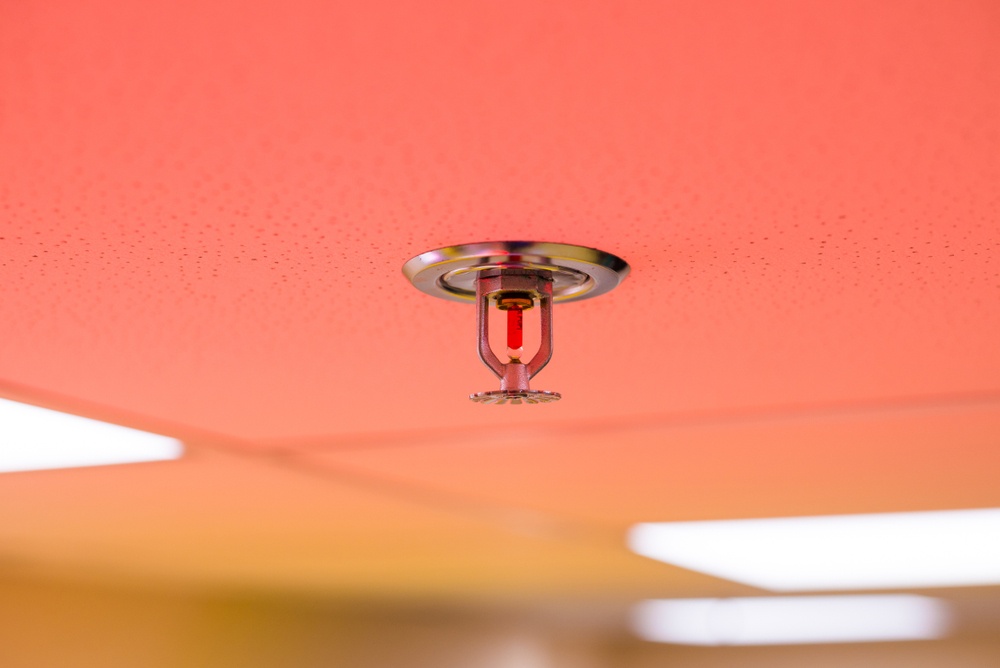Why Fire Protection Engineers Recommend Automatic Sprinklers

There are many types of fire protection systems, and their functions include detection, alarms, smoke removal and direct fire suppression. There are also measures designed to help firefighters, in cases where their assistance is required. In particular, automatic sprinklers are strongly recommended by fire protection engineers, since they can extinguish most fires when the flames are still small.
Automatic sprinkler systems bring two significant benefits in addition to effective fire protection: buildings become eligible for better insurance plans if they have sprinklers, and spaces for rent become more attractive for tenants who prioritize fire safety. Therefore, a sprinkler system brings benefits even if it never activates in the entire service life of a building.
Equip your building with a code-compliant fire sprinkler system.
The mandatory fire protection systems for a building change depending on the type of property and local building codes. However, if you decide to install optional measures, they must meet codes and standards just like mandatory systems. Automatic sprinklers are not mandatory for all buildings, but they must always meet the NFPA 13 standard and local codes. In the case of New York City, all buildings covered by Local Law 26 of 2004 must be equipped with automatic sprinkler systems by July 1, 2018.
Understanding How Fire Sprinklers Work
Movies and TV series have created a wrong idea about automatic sprinkler systems. You have surely watched scenes where all the sprinklers in a building activate with the slightest sign of smoke or fire, but this does not happen in real life.
In actual construction projects, most sprinkler systems are designed for localized action, where sprinkler heads activate individually in response to heat. When there is a fire, only the sprinklers directly above release water, and all other building areas are unaffected.
Also note that sprinklers are triggered by heat, not smoke. Sprinkler heads have a seal that is sensitive to heat, which breaks open when hot air from a fire reaches them. In other words, they will not activate with smoke from cooking appliances or cigarettes.

Unfortunately, many property owners decide not to install sprinkler systems, believing they can shower an entire building as portrayed in the movies. However, only deluge sprinkler systems operate like this, and they are only used in areas with plenty of flammable materials. Even a small fire is a serious hazard in these cases, and sprinkler heads activate uniformly. However, these are special sprinklers that are permanently open, and controlled by fire and smoke detectors. Normal sprinkler heads that activate with heat will not activate in response to heat and smoke detectors - only direct heat from the flames will trigger them.
Reducing the Cost of Automatic Sprinkler Systems
Although the cost of fire sprinkler systems varies depending on building conditions, you can expect to pay over $3 per square foot of indoor space. As a result, automatic sprinklers represent a sizable investment in large properties, but their cost can be optimized with smart design decisions:
- In new construction projects, fire protection engineers can work with architects to optimize the sprinkler head layout during the design phase. In some cases, the sprinkler head count can be reduced significantly with slight changes to architectural features.
- If your project uses dropped ceilings, use fireproof materials. When the dropped ceiling structure is vulnerable to fire, the NFPA 13 requires sprinkler heads both above and below the dropped ceiling. This increases installation costs drastically.
An automatic sprinkler system becomes less expensive when optimal coverage is achieved with less sprinkler heads and a shorter piping distance. Some local building codes include conditional requirements for fire sprinklers, where additional features are needed if the sprinkler system has certain characteristics. For example, automatic sprinkler systems in New York City are subject to additional requirements if they have more than 20 sprinkler heads per connection.
Since the damage caused by a major fire is much higher than the cost of an automatic sprinkler system, fire protection can be considered an investment in your property. Also consider that sprinklers save many lives. Fire protection engineers can meet all applicable codes and standards for automatic sprinkler systems, and they can also reduce installation costs by optimizing the sprinkler head layout.

Anuj Srivastava
Anuj Srivastava is a principal partner at NY Engineers. He is known for his MEP franchise market knowledge. Anuj is currently leading a team of 100+ MEP/FP engineers and has successfully led over 1500 franchise projects in the US.
Join 15,000+ Fellow Architects and Contractors
Get expert engineering tips straight to your inbox. Subscribe to the NY Engineers Blog below.



